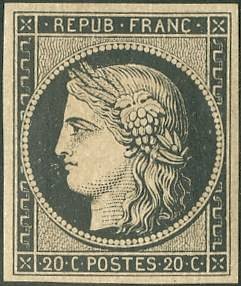You can help expand this article with text translated from the corresponding article in Russian. (January 2015)Click [show] for important translation instructions.
|


This is a survey of the postage stamps and postal history of Iran .
You can help expand this article with text translated from the corresponding article in Russian. (January 2015)Click [show] for important translation instructions.
|


This is a survey of the postage stamps and postal history of Iran .
In the pre-stamp era an ancient system of couriers operated throughout the Persian empire. [1] At a very early stage, these couriers used the ancient route from Babylon to Kermanshah, up to Hamadan—the classic Ecbatana—touching Tsagros in transit. This royal route changed in the course of time. According to ancient sources like Herodotus and Xenophon, Cyrus, King of Persia paid close attention to the communication network. From Xenophon we learn that Cyrus had stations and stables built to facilitate the couriers' missions and their efficient delivery of messages from the central power to the provinces. It was not a postal service as we know it today and it was not accessible to everyone. [2]
In 1864 British colonial post offices using India's postage stamps were opened in Muscat and Bushire. These two postal outlets proved very successful and in 1867, Anglo-Indian post offices were opened in Bandar Abbas, and Linga. In the course of time a total of 13 Indian Post Offices operated in Iran. Following a 1922 agreement between India and Iran, on 30 March 1923 all Indian postal facilities in Iran were closed, except for two exchange bureaux in Duzdab and Mirjawa that continued to function for a few more years. [3]
Russian post offices operated in 1908-18 in northern Persia using stamps of Russia. [1]
The modern era of postal service in Iran started in 1851 with a postal reform that had no immediate effects. The success of the Anglo-Indian postal operations combined with the positive reports about postal reforms in Europe and throughout the British Empire generated a renewed interest about postal communications and telegraphy in Naser al-Din, the Shah who reigned from 1848 to 1896. In 1865 he sent a delegation to Paris to liaise with the French Ministry of Posts & Telecommunications. The news of the Iranian mission got around and a private businessman by the name of A.M. Riester submitted essays for Iranian stamps featuring a lion and a rising sun behind it, set in an oval inner frame, part of an ornamentally rich frame. Months went by and Riester decided to contact Teheran, but he was chided for taking the liberty of using national symbols for unsolicited stamps. Meanwhile, the Iranian mission had opted for essays featuring a similar design prepared by Albert Barre. These essays caught the attention of top bureaucrats and eventually that of the Shah; as a result, in 1868 imperforate stamps with basically the same design of the Barre essays were printed in Teheran in quantities varying from 3,000 to 8,000 and issued for postal use in four denominations: 1 shahi violet; 2 shais green. 4 shais blue; and 8 shais red. They have been nicknamed the Bagheri stamps, possibly in reference to the person who printed or designed them. There was no hand-stamp or date-stamp in use to cancel these stamps and their circulation and use was relatively modest. In fact, not many letters are recorded, and because of the lack of any cancelling device, it is rather problematic to determine their genuine postal use simply because it is easy to exponentially increase the value of an un-cancelled letter by just adding an adhesive or two on to it.

A post office is a public facility and a retailer that provides mail services, such as accepting letters and parcels, providing post office boxes, and selling postage stamps, packaging, and stationery. Post offices may offer additional services, which vary by country. These include providing and accepting government forms, and processing government services and fees. The chief administrator of a post office is called a postmaster.

A cancellation is a postal marking applied on a postage stamp or postal stationery to deface the stamp and to prevent its reuse. Cancellations come in a huge variety of designs, shapes, sizes, and colors. Modern cancellations commonly include the date and post office location where the stamps were mailed, in addition to lines or bars designed to cover the stamp itself. The term "postmark" refers specifically to the part that contains the date and posting location, but the term is often used interchangeably with "cancellation" as it may serve that purpose. The portion of a cancellation that is designed to deface the stamp and does not contain writing is also called the "obliteration" or killer. Some stamps are issued pre-cancelled with a printed or stamped cancellation and do not need to have a cancellation added. Cancellations can affect the value of stamps to collectors, positively or negatively. Cancellations of some countries have been extensively studied by philatelists, and many stamp collectors and postal history collectors collect cancellations in addition to the stamps themselves.

An overprint is an additional layer of text or graphics added to the face of a postage or revenue stamp, postal stationery, banknote or ticket after it has been printed. Post offices most often use overprints for internal administrative purposes such as accounting but they are also employed in public mail. Well-recognized varieties include commemorative overprints which are produced for their public appeal and command significant interest in the field of philately.

Indian postal systems for efficient military and governmental communications had developed long before the arrival of Europeans. When the Portuguese, Dutch, French, Danish and British conquered the Marathas who had already defeated the Mughals, their postal systems existed alongside those of many somewhat independent states. The British East India Company gradually annexed the other powers on the sub-continent and brought into existence a British administrative system over most of modern-day India, with a need to establish and maintain both official and commercial mail systems.
This is a partial timeline of significant events in postal history, including dates and events relating to postage stamps.
This is a list of philatelic topics.

This is a survey of the postage stamps and postal history of the Russian Empire, the Soviet Union and the modern Russian Federation.

India Post is an Indian government-operated postal system in India, and is the trade name of the Department of Post under the Ministry of Communications. Generally known as the Post Office, it is the most widely distributed postal system in the world, and India is the country that has the largest number of post offices in the world. Warren Hastings had taken initiative under East India Company to start the Postal Service in the country in 1766. It was initially established under the name "Company Mail". It was later modified into a service under the Crown in 1854 by Lord Dalhousie. Dalhousie introduced uniform postage rates and helped to pass the India Post Office Act 1854 which significantly improved upon 1837 Post Office act which had introduced regular post offices in India. It created the position Director General of Post for the whole country.

Scinde Dawk was a postal system of runners that served the Indus Valley of Sindh, an area of present-day Pakistan. The term also refers to the first adhesive postage stamps in Asia, the forerunners of the adhesive stamps used throughout India, Burma, the Straits Settlements and other areas controlled by the British East India Company. The name derives from the words "Scinde", the British spelling of the name of the province of Sindh, and "Dawk", the anglicised spelling of the Hindustani word "Dak" or Post.

The Ceres series was the first postage stamp series of France, issued in 6 different values from 1849 to 1850 as a representation of the French Republic.

The postal history of Turkey and its predecessor state, the Ottoman Empire, dates to the 18th century when foreign countries maintained courier services through their consular offices in the Empire. Although delayed in the development of its own postal service, in 1863 the Ottoman Empire became the second independent country in Asia to issue adhesive postage stamps, and in 1875, it became a founding member of the General Postal Union, soon to become the Universal Postal Union. The Ottoman Empire became the Republic of Turkey in 1923, and in the following years, its postal service became more modernized and efficient and its postage stamps expertly designed and manufactured.

The Gibraltar Study Circle is a global non-profit society based in the United Kingdom, founded by Walter (Wally) Jackson in 1975. Its aim is to expand the knowledge of the philately of Gibraltar, a British overseas territory located at the entrance to the Mediterranean Sea overlooking the Strait of Gibraltar. The study circle looks at the philately of Gibraltar in all its forms for the benefit of collectors (philatelists) from all walks of life. This includes studying the postal history, postage stamps, revenue stamps, postal stationery and associated overprints from Gibraltar and any of these used in Morocco. Any new information is shared with the membership via its quarterly journal, "The Rock", which has been published since 1975, showing articles of interest not only to philatelists but also historians, artists and sociologists.

The first postage stamps of Bhutan were issued in 1962, the same year that the first motorable road was opened. Before that there was a mail delivery system in place for official mail using mail runners, and between 1955 and 1962 revenue stamps were accepted as payment for internal mail. With the opening up of Bhutan in the early 1960s, a formal postal system was introduced.

Bahrain first used the postage stamps of British India before eventually issuing its own stamps in 1960.

The colony of the British Virgin Islands has issued its own stamps since 1866. The first Post Office was opened in Tortola in 1787. At the time postage stamps were not yet invented, and it was not until 1858 that a small supply of adhesive stamps issued by Great Britain depicting Queen Victoria were utilized by the local Post Office. These stamps were cancelled by an A13 postmark and are extremely rare so cancelled.

This is a survey of the postage stamps and postal history of Ethiopia. Long an independent state in Africa, messages were originally carried by couriers called méléktegnas, who held the letters attached to a stick.

The Mosely Collection of British Africa stamps dating to 1935 was formed by Dr Edward Mosely of Johannesburg, South Africa. The collection was donated to the British Museum by his daughter, Kathleen Cunningham, in 1946 and is now held as part of the British Library Philatelic Collections. After the Tapling Collection, this is considered the Library's most important philatelic acquisition due to the number of countries represented and the number of unique items included.

British postal agencies in Eastern Arabia issued early postage stamps used in each of Abu Dhabi, Bahrain, Dubai, Kuwait, Muscat and Qatar. Muscat and Dubai relied on Indian postal administration until 1 April 1948 when, following the Partition of India, British agencies were established there. Two agencies were opened in Qatar: at Doha and Umm Said. In Abu Dhabi, an agency was opened on Das Island in December 1960 and in Abu Dhabi City on 30 March 1963. The agencies also supplied stamps to Bahrain until 1960; and to Kuwait during shortages in 1951–53.